Things that work here: - Gmail (to my great surprise)
- Bing search (although it admits it filters out prohibited results).
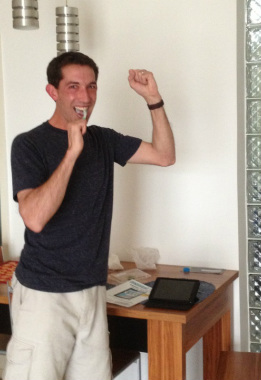 - The MLB At Bat app, giving Ryan the unique opportunity to listen to the O's during his breakfast. (On Saturday morning, which was Friday night in Baltimore, Ryan got to hear a 9th-inning comeback victory for the Orioles as he brushed his teeth).
- The Washington Post
- USA Today
- The Wall Street Journal
Things that don't work here:- Facebook
- Twitter
- YouTube
- New York Times, although Kate said it sometimes works depending on whether they are writing critical articles. My guess is that their reporting on the cyber-espionage is to blame.
- Google search (It worked in Xi'an, but doesn't in Beijing. Kate says this is likely because the government has it blocked in the capital).
- Wikipedia (selective sites are not available).
-Elizabeth
We had to ask Kate what this sign meant - do people here really just slap each other all the time in elevators? It actually means don't slap the doors, she said. The one inside her apartment also prohibits leaning.
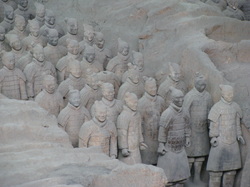 Back in the day (2,200 years ago), the Emperor Quin Shi Huangdi was a despot, a little obsessive compulsive about his own death and was very, very, very rich.
So naturally he had 700,000 of his people over several decades build him an army out of clay that could be buried in tombs near his own so that he could rule in the after life.
Hey, it probably sounded like a great plan at the time.
On the bright side for the 700,000 workers who had to to build the tombs and Terracotta Warriors, it could have been all of them buried alive in the tombs to guard him.
Out of this crackpot plan, though, came a remarkably well-preserved window into the past and the technology the Chinese had developed -- some of which didn't re-emerge until the 20th Century. (Read on to find out which ones.)
 Claymation: Elizabeth looks slightly impressed as many of the first 6,000 restored Terracotta Warriors stand ready for action. Some fun facts courtesy of our excellent guide, Lina:
- The faces are all individualized. "No twins," as Lina put it. They used two different molds for head shapes, then artisans crafted the faces to match individual soldiers.
- The detail on the soldiers were crafted right down to the hair styles, finger nails and -- get this -- finger prints.
- The tombs had probably been found scores of times over the centuries but because underground tombs are common, it wasn't a big deal until four farmers in 1974 found a Terracotta Warrior head while digging a well. They took it to the government in order to get a reward of about 40 yuan ($7 in today's dollars). As a result, the government realized what a prize this could be and immediately set up archaeological digs. The three founding farmers who are still living now get a 1,000 yuan-per-month pension ($165) and royalties from a book and autograph signings.
- The warriors were found smashed into pieces. Armies of revolting citizens smashed many of them after the emperor's death (remember, he was a despot, although he was the one to first unify China.) Many of the underground chambers were burned, which in some cases brought the heavy wooden ceiling beams of the burial chambers crashing down.
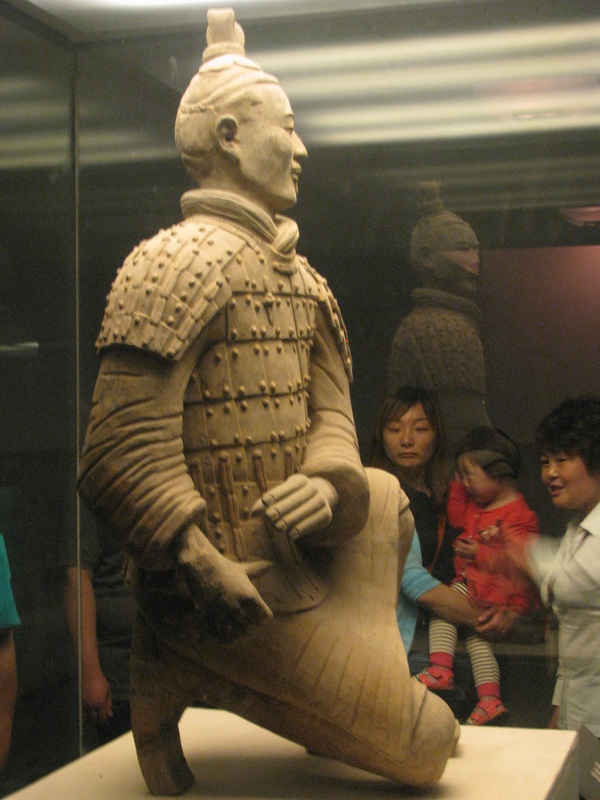 One lucky dude. 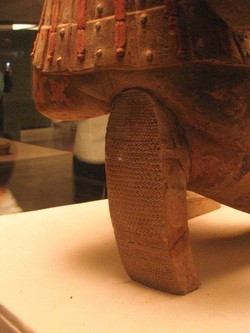 - Only one Terracotta warrior has been found in one piece so far -- a kneeling archer. The bottom of his shoe revealed more stunning detail: treads. "Original Nike design from 2,000 years ago," Lina said.
- Each soldier held weapons, many of them made from bronze. But also found was a chrome plated sword, crafted circa 200 B.C. That technology wasn't re-invented again until 1937 and 1950 in Germany and the United States, respectively.
It's too bad that technique was buried for all those centuries.
- Ryan and Elizabeth
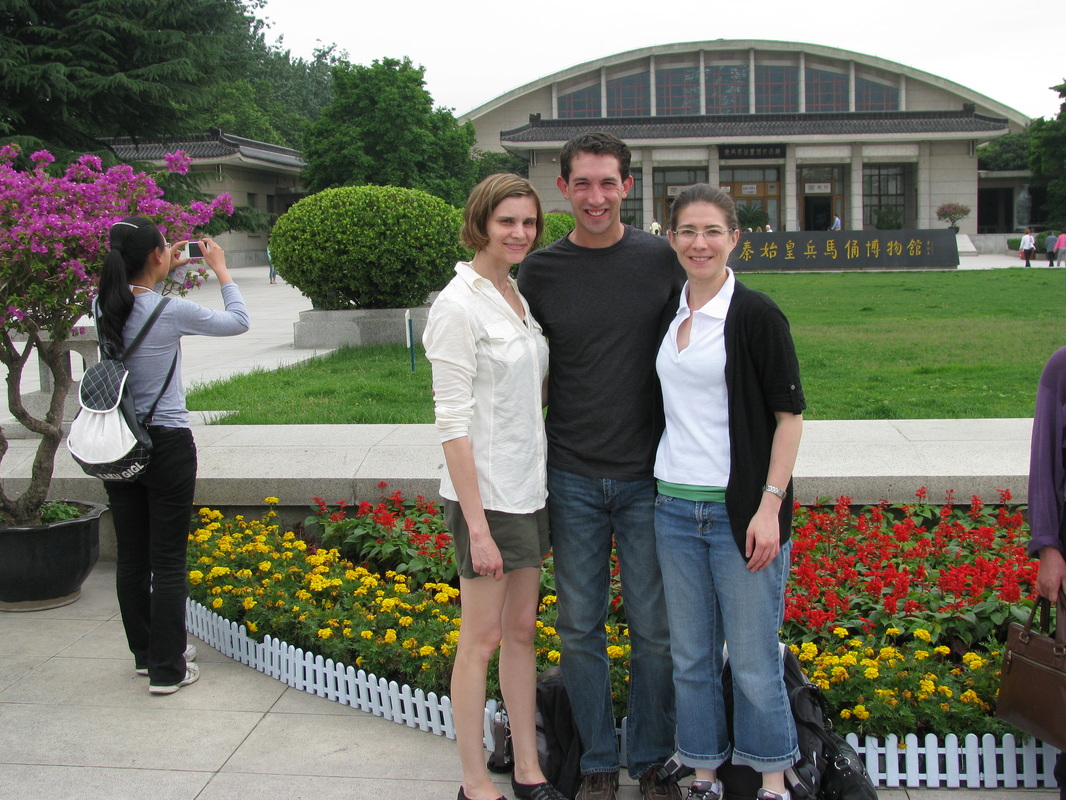 Group shot outside the entrance to Pit 1.  The first pit is huge in size. Pit 2 might just be bigger, but very little has been uncovered because the archaeologists hope to preserve the paint on the warriors and the technology doesn't exist yet. 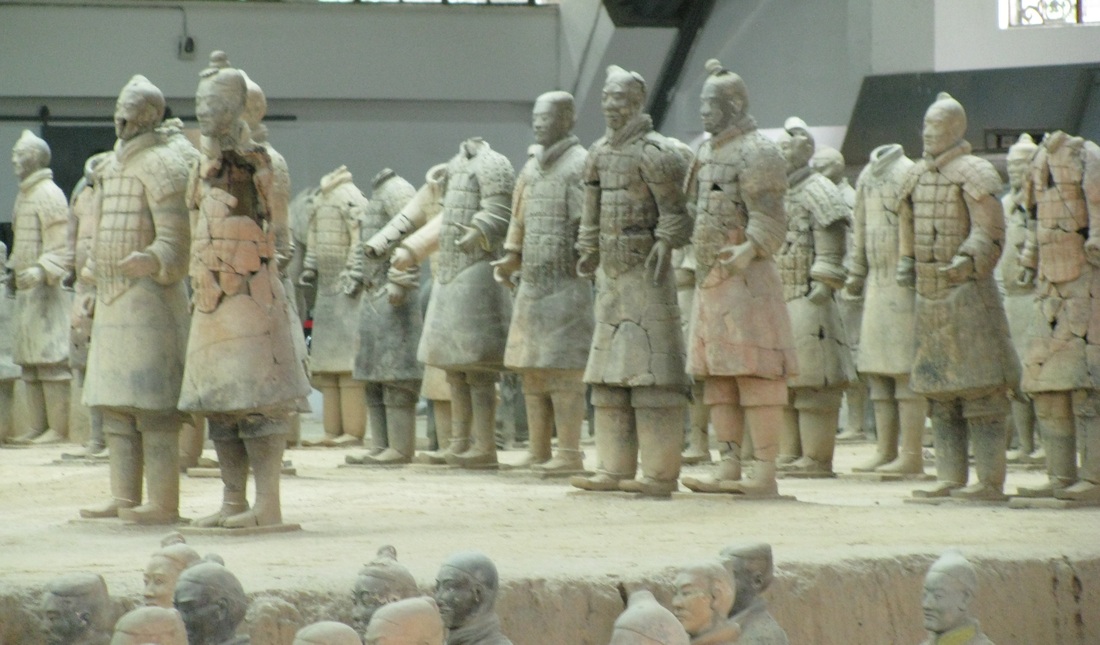 Warriors that are still being pieced together.  Calvary horses wore bridles made of jade and hinged together.  Two chariots have been found outside the emperor's tomb. They are only half size, because of how heavy they are. One original and one model are on display. The other original is on loan to a museum in Europe.
 If orange road construction barrels are the unofficial tree in some U.S. states, then cranes are the unofficial bird of China.
The routes into both Beijing and Xi'an were lined by apartment and office towers of the future in various stages of construction.
On the way to see the Terracotta Warriors east of Xi'an on Friday, I lost count of the number of buildings with tower cranes around 86. Then we passed another flock of at least a dozen shells of buildings, and I gave up.
It is as if the bones of China's major cities are experiencing hyper-fast growth spurts at the same time.
And that got me wondering about a few things.
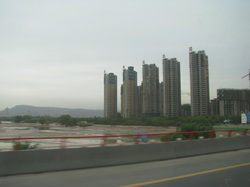 1. Who the heck is building all of these apartments and condos? Independent information, especially about the economy, isn't easy to find in China. But I was able to verify that the China Housing and Land Development Corp. Inc. is the largest non-governmental residential construction company in Xi'an. And it has been racing over the past five years to get ahead of an increase in housing demand to satisfy China's burgeoning middle class. But there's also money to be made -- either now or in the future. And that has gotten the attention of China's nuveau riche. 2. Who buys all these condos? And the answer might be not a lot of people ... yet. Our guide at the Terracotta Warriors said that wealthy Chinese are investing in these condos now in preparation for the next wave of massive migration of Chinese from the country to the cities. So that's why it doesn't seem to matter that many of the new buildings have vacant condos, according to Kate's Chinese friends. Indeed, real estate development investment increased nearly ten-fold between 2001 and 2010, from $75 billion to nearly $730 billion, according to the China Housing and Land Corp. One other related note: The Chinese government did implement a rule barring foreigners and Chinese from purchasing more homes beyond the one they live in so as to limit property speculation. That started in 2010 as a way to keep home prices from spiraling beyond the grasp of the new middle class and to slow inflation, according to this China-Briefing article. 3. Finally, where the heck are all these cranes coming from?
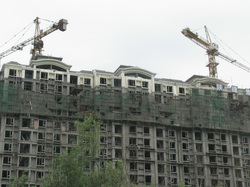 Most of them are coming from China. The domestic tower crane manufacturing here is seeing an increase in production capacity "of a magnitude unparalleled in the history of the crane industry," according to Stuart Anderson, who toured eight crane factories earlier this year for Crane Today Magazine (yes, that's a real thing.) Demand for use in China is fueling 90 percent of that production, he wrote. So yes, apparently cranes can fly after all. - Ryan
 The restaurant: Xiao Yang Barbecue. The restaurant: Xiao Yang Barbecue. The two main things we look for in restaurants here are whether they are cooking and selling their food inside (we suspect it greatly increases the chances that somebody is inspecting them) and whether they have pictures on the menu. It's a leap of faith after that.
Kate, who gave us that advice, took us to a Chinese barbecue joint Thursday night. And we ordered ourselves our own personal Chinese buffet of grilled, seasoned, noodled, skewered, roasted, steamed and barbecued vegetables.
Some useful information Kate shared: Restaurants bring out the food in the order in which it is done. So food that we ordered seemed to keep arriving. And the custom is to order more food than can be eaten at one sitting. That, Kate said, stems from the hosts to provide enough that no guests leave hungry. "A clean plate isn't a good thing," Kate said. That also means the doggie-bag business is booming at restaurants.
First came the Lotus fruit and peanuts, which we realized later when we were doggie-bagging it also came on top of noodles.
After that came a selection of skewered barbecue Shitake mushrooms, barbecued green beans, steamed broccoli, cauliflower, tofu and squid on skewers, woodear mushrooms (whose name doesn't give them justice) with celery-like greens, vegetable rolls with spicy dipping sauce, spicy eggplant and bread and bean dip.
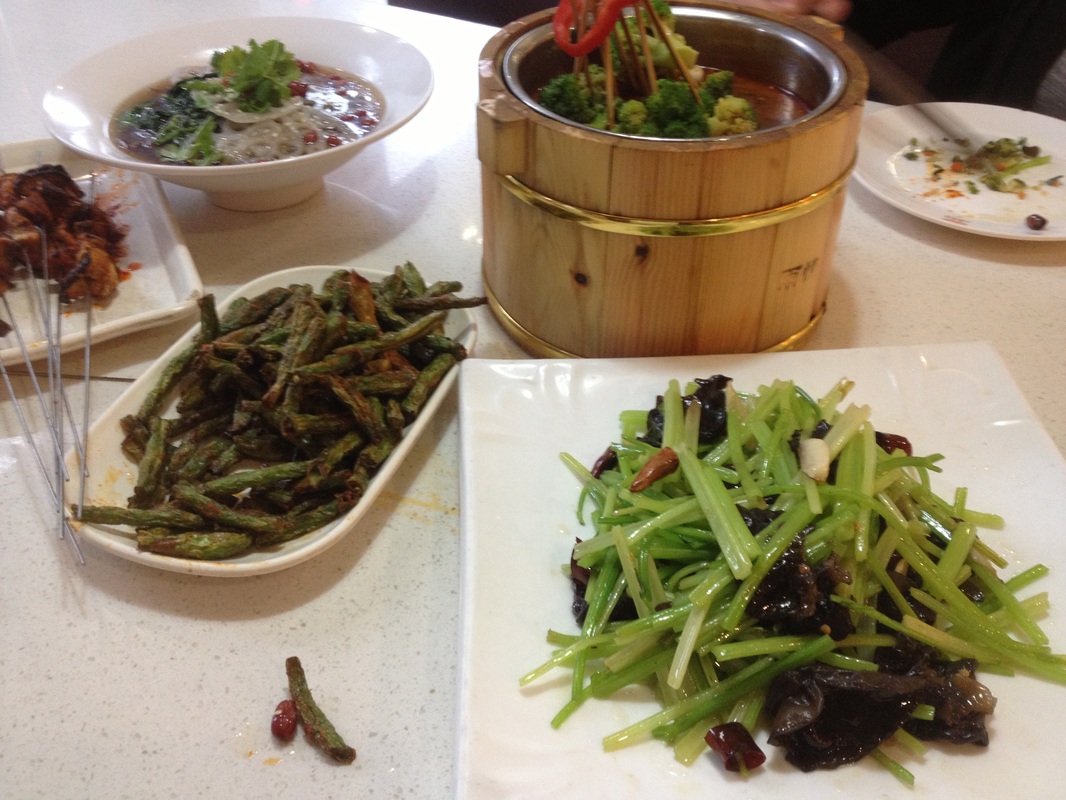 Part of our vegetable feast. Our waitress spoke zero English, so Kate handled most of the ordering, except she let me order several of the dishes by pointing to the picture and saying "This" in Mandarin, which is "zhege" -- pronounced jega.
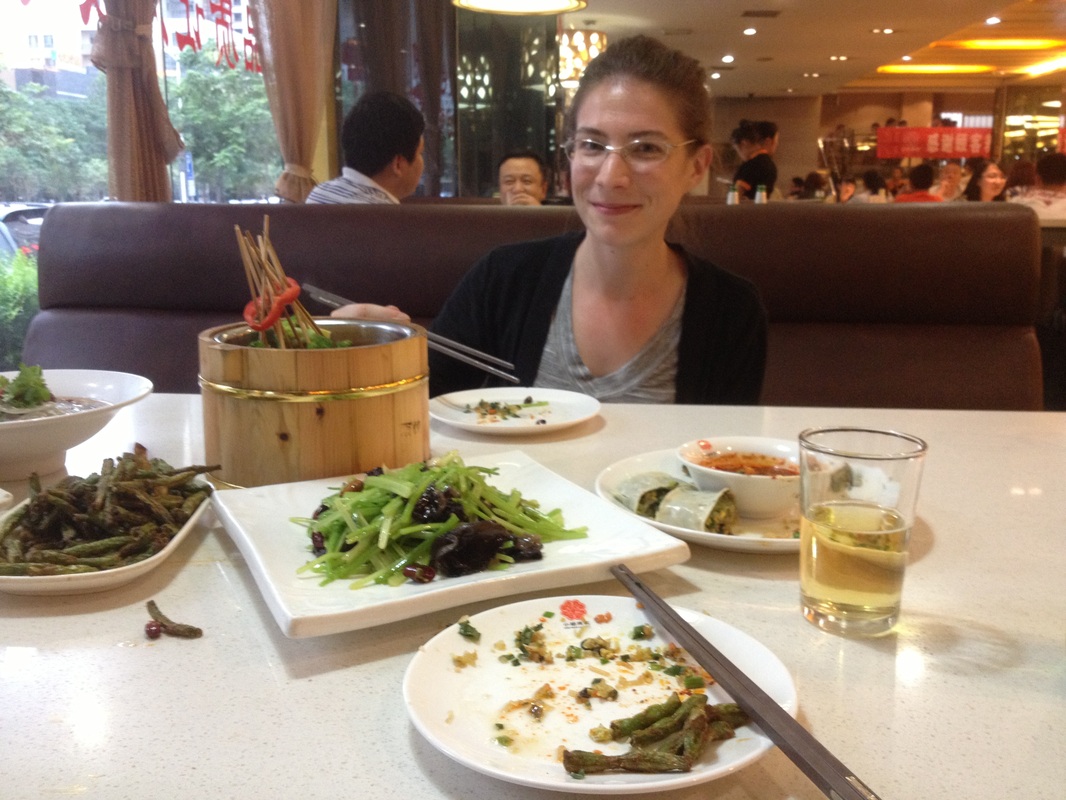 Kate is a chopsticks master. But she taught us well. We only dropped a few things on the table. (Note the stray bean and peanut to the left -- that was all Elizabeth.) Perhaps what's most amazing is that we got all this food -- and two 40-ounce bottles of Tsing Tau -- for the equivalent of about $25. And we have plenty left over for Friday night's meal.
- Ryan
Kate warned us that we'd be gawked at during our time in China considering Westerners are still somewhat rare in parts of China. And she told us we'd likely have our picture taken, as she has numerous times (I'll link to her blog post on the topic just as soon as I'm back in the United States with access to blogspot again. In the meantime, you can visit Orient Orientation and choose Orient Orientation 2 and find it for yourself). Ryan and I didn't feel like most people gave us a second glance in Beijing, but Xi'an has been different. We had our photos snapped by a few groups Thursday as we explored the Shaanxi History Museum, the Giant Wild Goose Pagoda and the surrounding shopping area. Don't get me wrong, it wasn't full-on paparazzi. But it was kind of wild when this gentleman above approached us at the Buddhist Giant Goose Pagoda and asked Ryan in decent English if he would be so kind as to take this snapshot.
Earlier, we had stopped to eat snacks on a park bench when two girls in a small group stopped and started giggling. They first tried to be sneaky about taking photos of us.Then two decided to be brave and ask if their friend could take a picture of the five of us together. We of course said yes. But it didn't occur to us until afterward to take our own picture, leaving Ryan to scramble to get this photo of their backs.
- Elizabeth
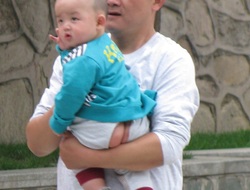 Today's topic is bathroom related, so feel free to skip it if you think it's just TMI. Trust me, I'll understand.
Most babies in China don't wear diapers. They wear pants that are split in the crotch, and their parents hold them up over a bush, a nice grassy area, or somewhere else convenient* when it's time to go. I find this concept fascinating.
We went to a large open-air mall on Thursday, meaning we got to see this phenomenon in action. Well, Ryan is the only one of us who happened to see it in action, if you know what I mean. But I did spot several children wearing these pants and one family cleaning up after a child they didn't get to the grass in time.
This is a topic that has been well documented in the press, and it appears changes are coming slowly.I understand that this practice is environmentally friendly as well as a cultural tradition, but it seems to me that parents would be frequently covered in pee. And so would your belongings. And it totally explains why people here remove their shoes before entering the house, since who would want to track urine everywhere?
As for me, I am so, so happy to live in a society that has embraced the diaper -- whatever kind it is.-Elizabeth *By convenient, Kate says it's just "Wherever they are at that moment." Bonus material - Less sensitive headlines suggested for this post: - No butts about it, urine China now
- Just say no to crack
Among the fruit choices at our breakfast in Beijing on Wednesday were two items neither of us had ever seen.
One was fleshy white melon with black seeds, which I dubbed "dalmatian melon." It had a kiwi-like texture and its flavor was a subtle mix of watermelon and kiwi.
The other tasted like a sweet pear. Its texture and appearance, however, were exactly how I imagine a scooped-out eyeball to be like. Thus, I could not convince Elizabeth to try it.
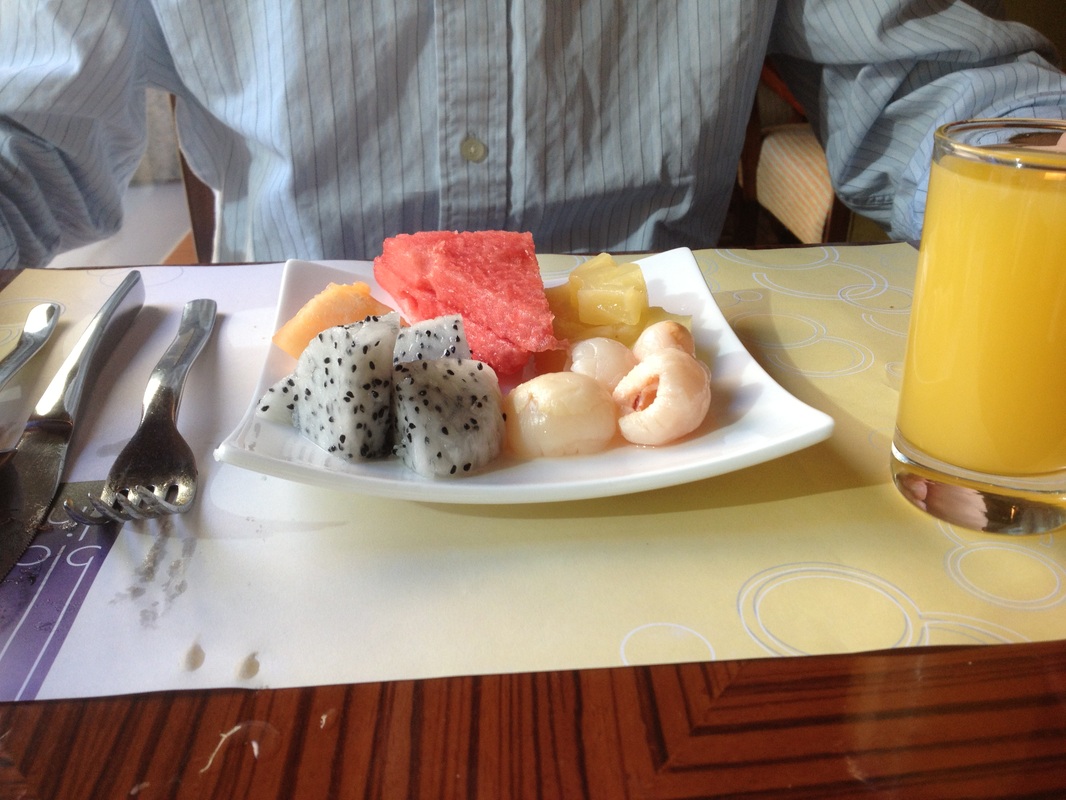
"Dalmatian melon" is on the left and the "eyeball fruit" Elizabeth was too chicken to try is on the right.
These were among the mysteries we were looking forward to having my sister, Kate, solve for us when we arrived in Xi'an. She took us grocery shopping Wednesday night at her local Lotus store, which is like a Meijer with its sections for clothes and other home items in addition to the food.
The "dalmatian melons" are actually dragon fruit, which look even wilder on the outside. The "eyeball fruits" are Lychee. We picked some out and will post a follow-up on how to shell them or peel them or whatever needs to be done to them.
Kate guided us through Lotus, which requires getting all of your fruit and vegetables weighed and stickered at stations in the produce department.
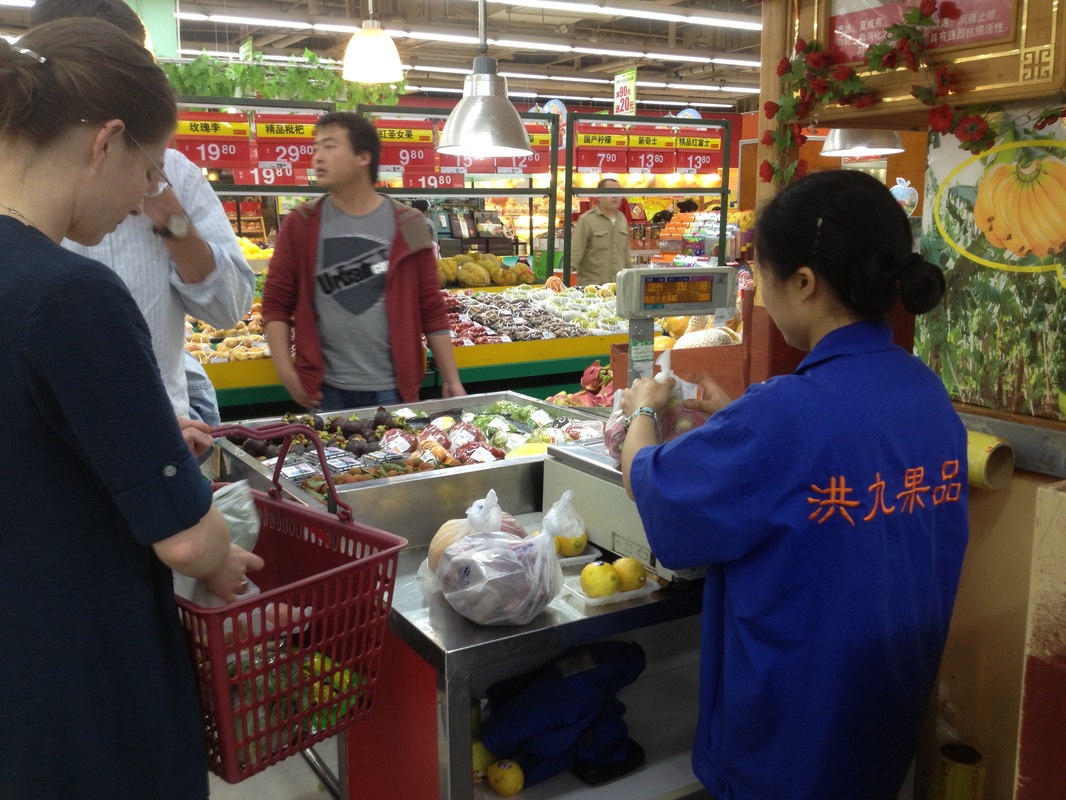
Kate gets her selection of mangos properly stickered.
Grocery shopping in China was another example of the blend we've found between foreign and familiar.
Familiar: the layout, aisle arrangement, bread, most of the vegetables, ice cream (with the exception of flavors like honeydew and green tea -- which we bought to try).
Foreign: Turtles and frogs, milk that's not refrigerated (Kate explained the milk is ultraviolet pasteurized and doesn't need it until opened), dog food-bag-sized containers of rice and an entire section devoted to giant plastic vats of cooking oil.
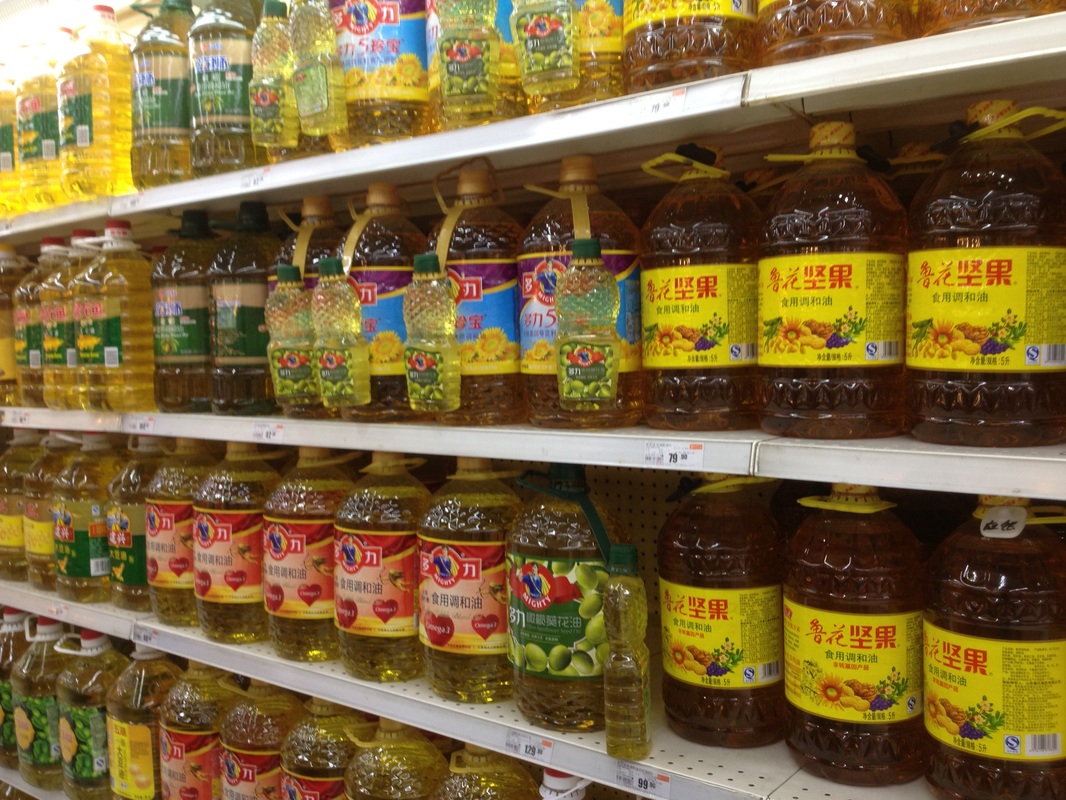
No oil crisis here.
But Elizabeth's favorite section was the tea accessory station. It featured dried lemon slices, dandelions, flower petals, lavender, pieces of tree branches and other unidentified dried stuff. -Ryan
Why don't they have this at Kroger? The dissection station is a staple at this Xi'an grocery store, called Lotus. And here's why it's necessary: Yep, those are frogs and turtles in action that Elizabeth captured with her iPhone on our tour through the grocery store.
We grabbed a flight from Beijing to Xi'an on Wednesday afternoon, and Ryan crossed one item off his bucket list - being greeted at the airport by someone holding a sign with his name on it. A few quick facts on Xi'an: It is the capital of the Shaanxi province and is located about 683 miles from Beijing. In 2010, Xi'an was the country's 14th biggest city with an urban core population of 3.4 million, according to Wikipedia (the most official source I could find, unfortunately). In the past, Xi'an served as the capital for 11 dynasties and was the eastern starting point of the Silk Road. We were going to take an overnight train, but Kate suggested we fly instead because of the difficulty in getting tickets in advance, the extended travel time,and the general discomfort of the train cabins. Not to mention being in a cramped train car for that long with the bird flu threat. The latter was enough reason for me. -Elizabeth
|

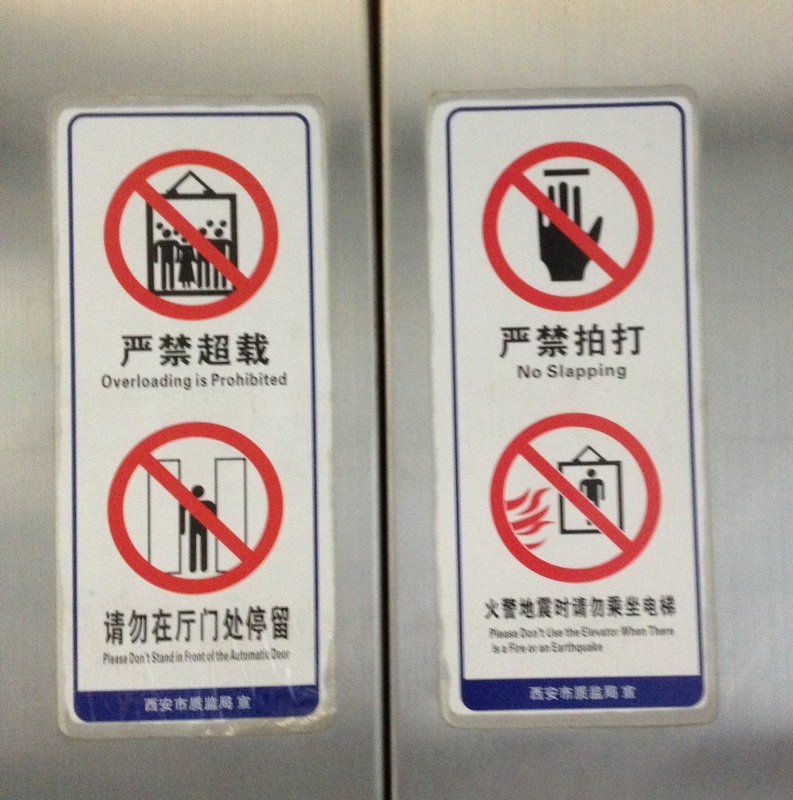









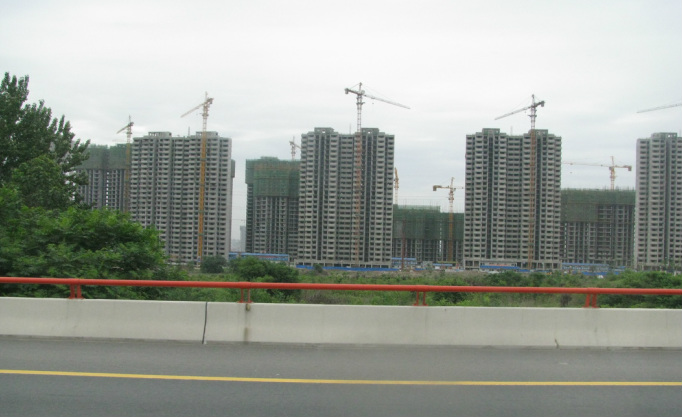







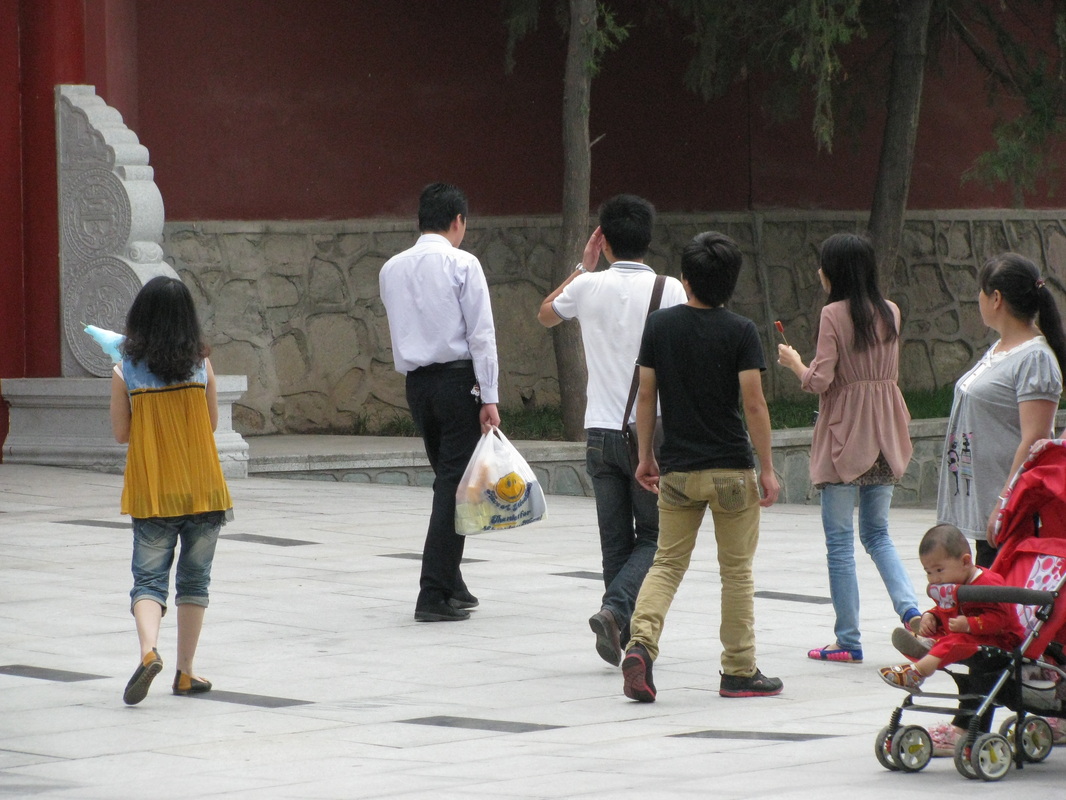

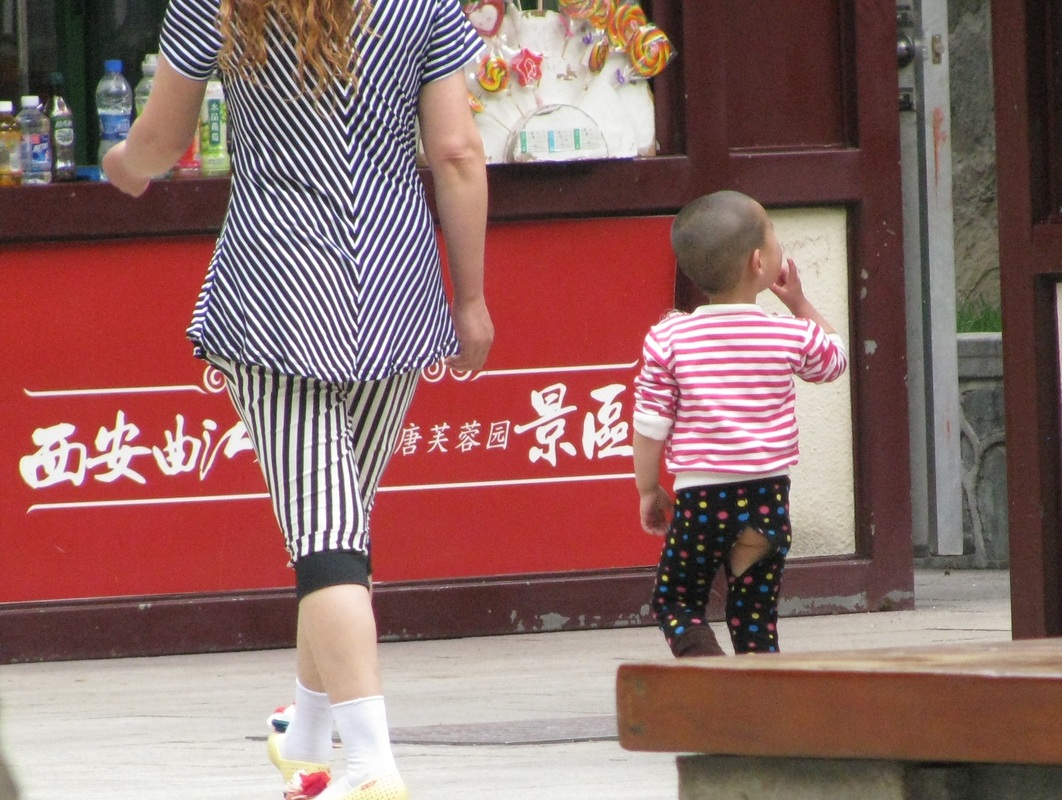



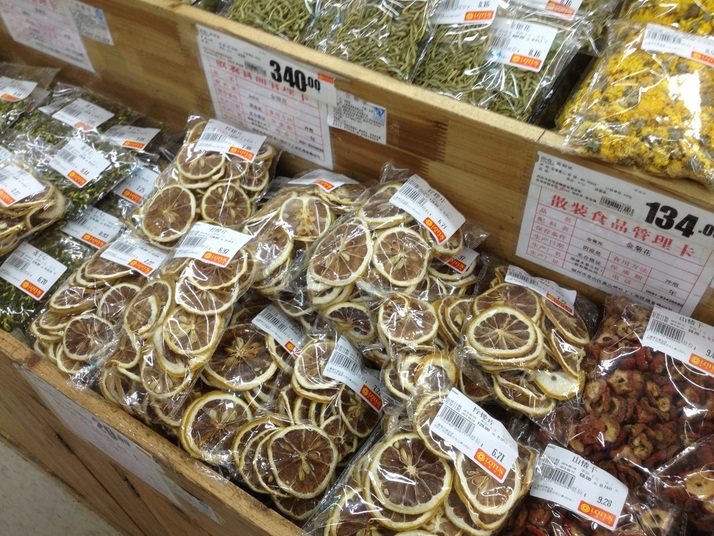
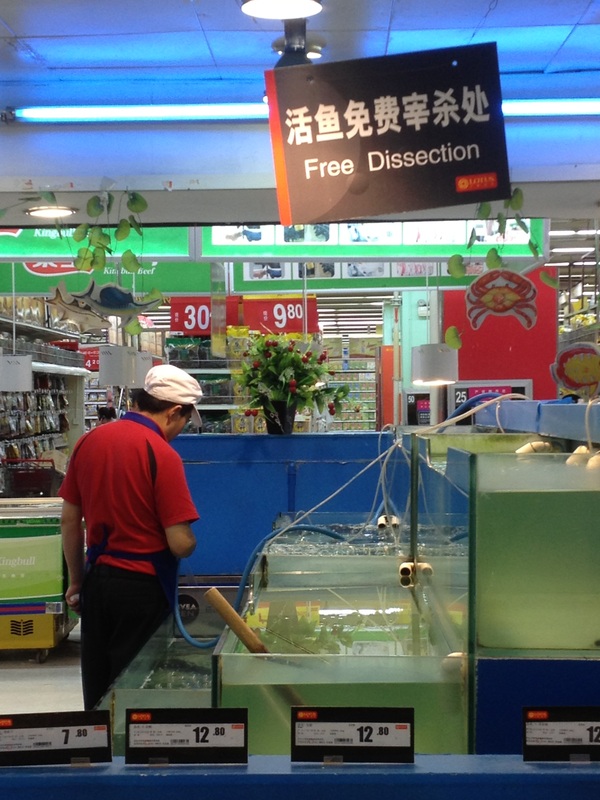
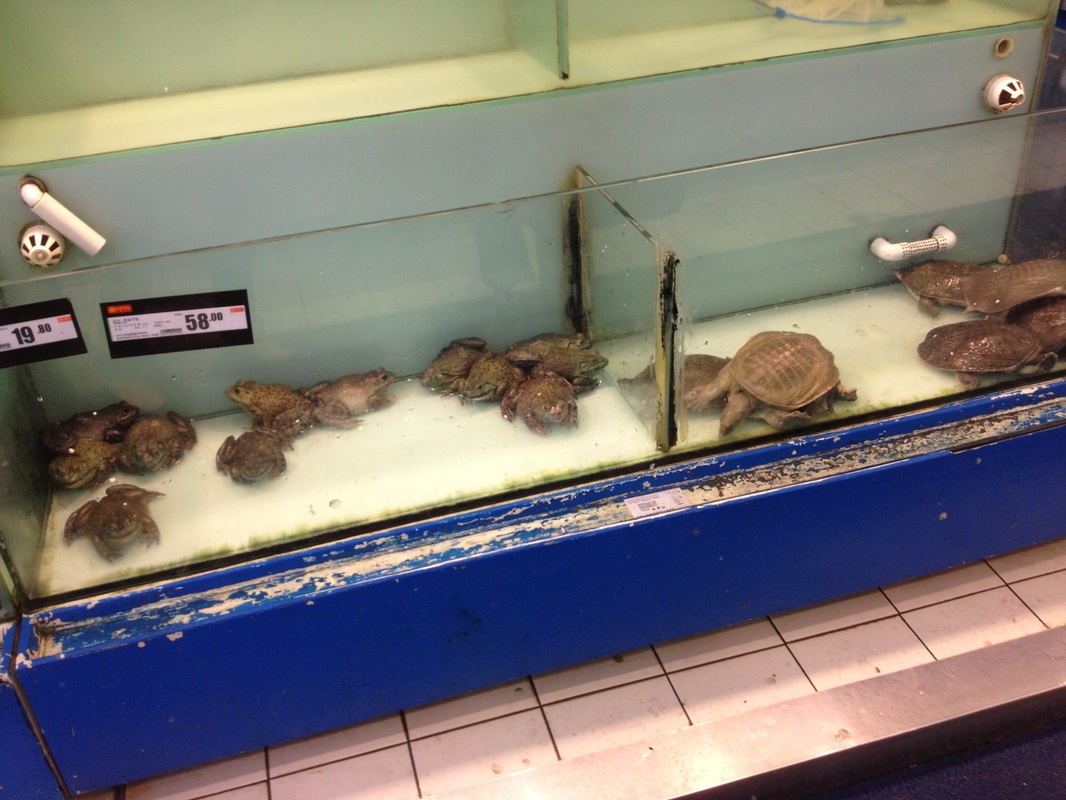

 RSS Feed
RSS Feed